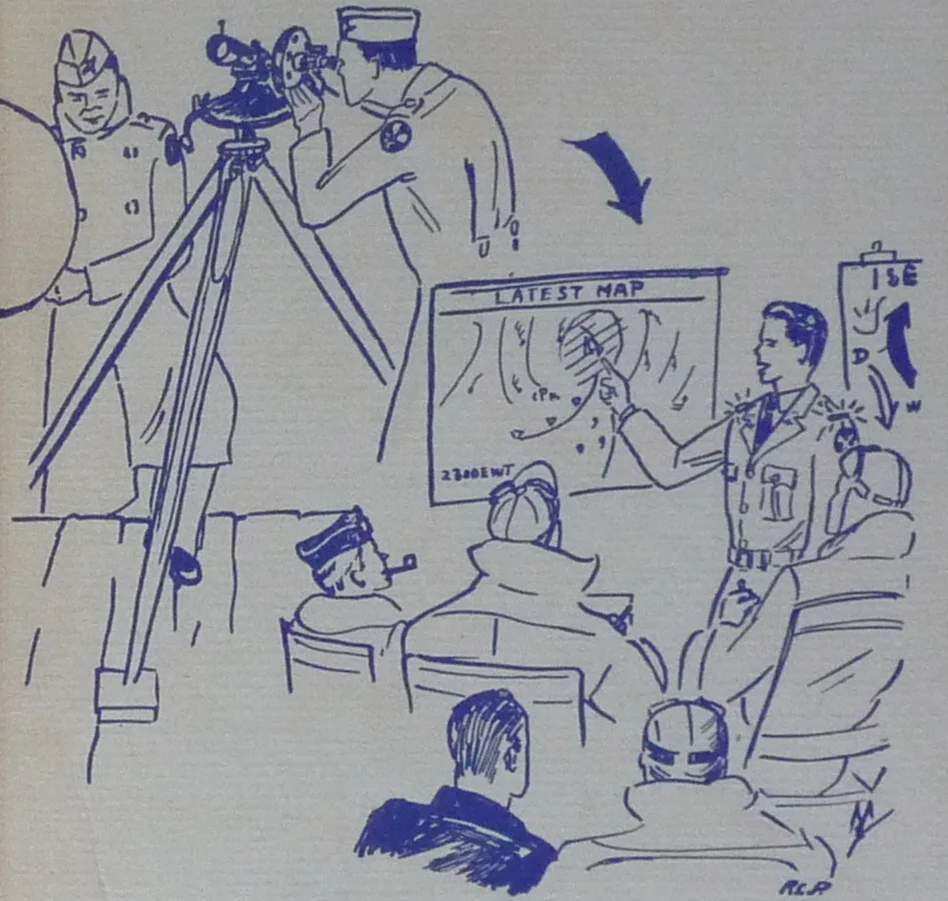Meet the Weather Cadet Generation
World War II required a vast and fast expansion of American meteorology. Meteorologists were needed to support new squadrons of aircraft, the expansion of amphibious warfare, and the sprawling logistics networks needed to fight a global war.
“Army and Navy Turn out Needed Weather Experts by Mass Production,” announced National Geographic in December 1943. The headline accompanied a photo of a lecture hall at UCLA, packed with nine rows of young men uniformed in Army Air Force khaki, and a half row of women in Navy blue. “So important is weather in planning and fighting the war that thousands of officers and enlisted personnel are being trained as weather forecasters and observers,” read the caption.[1]
The military established training detachments at five universities to produce new weather officers. Leading civilian scientists taught dynamic meteorology and forecasting to class after class of “weather cadets,” in intense, nine-month courses. About 6200 men and 100 women graduated from the university courses, part of perhaps 17,000 new weather forecasters and observers trained across the US military during the war years.
I call this group the Weather Cadet Generation. I’ll be posting the surprising stories of men and women who learned meteorology during World War II, then enjoyed remarkable careers after the war. Some transformed meteorology, while others reshaped economics, law, ecology and genetics. Still others remade the ways we eat, study for tests, and visualize our bodies.
Posts in this series:
- Cliff Hillegass, inventor of Cliffs Notes
- Maud Greenwood, medical illustrator
- William H. Rehnquist, Supreme Court Justice
Learn More:
- Roger Turner, “Teaching the Weather Cadet Generation: Aviation, Pedagogy, and Aspirations to a Universal Meteorology in America, 1920-1950,” in Intimate Universality: Local and Global Themes in the History of Weather and Climate, edited by James R. Fleming, Vladimir Jankovic, and Deborah R. Coen (Sagamore Beach, MA: Science History Publications, 2006): 141-173.
[1] National Geographic Dec. 1943, "Weather Fights and Works for Man,” pp 641-670, photo on p. 665, credit: USAAF, Official





